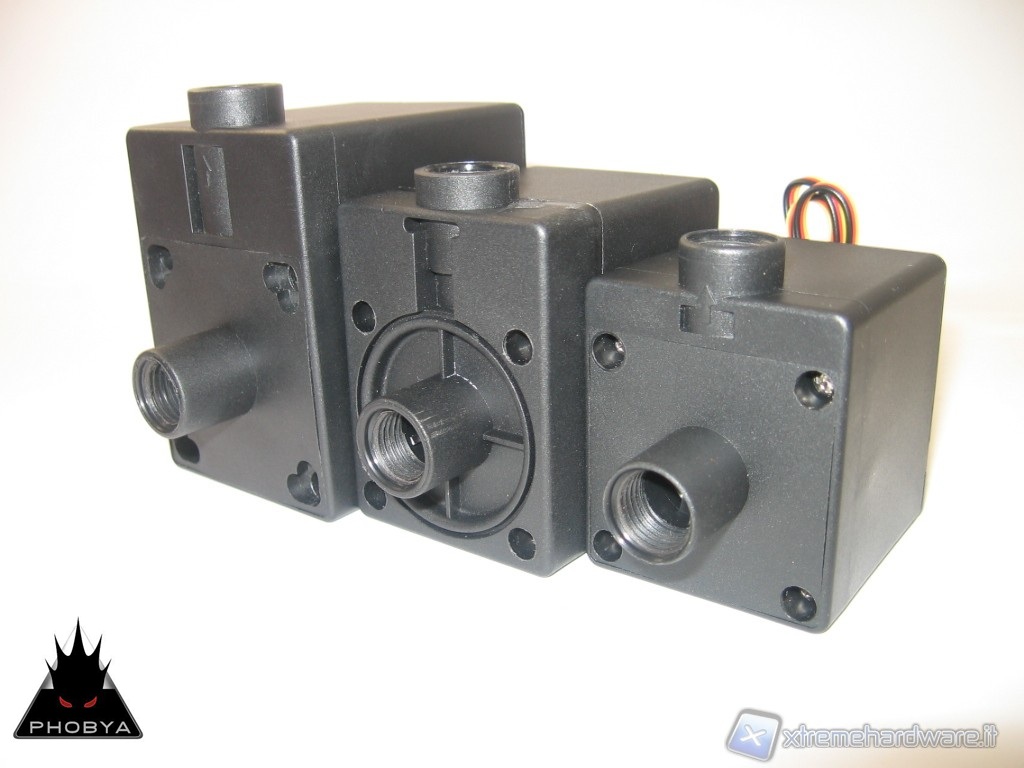 In this review XtremeHardware tested for you the Phobya liquid cooling system pumps. Produced in three models, DC12-220, DC12-260 and DC12-400, they are ideal to build a liquid cooling system with a modest cost.
In this review XtremeHardware tested for you the Phobya liquid cooling system pumps. Produced in three models, DC12-220, DC12-260 and DC12-400, they are ideal to build a liquid cooling system with a modest cost.
In previous years we have seen the introduction in the liquid cooling market of ever more powerful pumps and consequently more noisy, dictated by the need of flows and pressures that can work with increasingly restrictive water block. In the last 2 years, the market has brought about a change of course. Following less restrictive waterblocks and accessories, guaranteeing an equal, if not better, dissipation coefficient of the previous ones, the producers have focused on improving performance in relation to the flow and noise during operation. So new generation pumps have appeared on the market, which vary by type of technology used, power, size and supply voltage.
Pump means a machine tool capable of transferring energy to a liquid. Depending on how this energy transfer takes place, there are two types of pumps:
- volumetric pumps (that move constant amount of liquid for each cycle)
- kinetic pump (due to centrifugal force, the fluid increases its kinetic power that is converted into pressure energy. The power output depends on the prevalence)
Another general classification that we can do is:
- rotary motion pumps (ie centrifugal, with gears, with capsules, segmented, with membranes, etc.).
which we show the example photos below
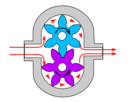
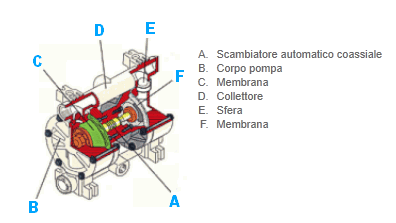
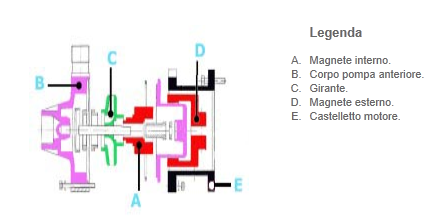
- Alternating motion pumps (ie piston, for example)
following is an example
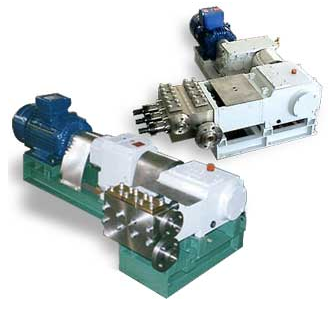
The prevalence term is mainly intended as the maximum height difference that a pump can overcome with a fluid.
The pumps that we will treat now are of rotary type, with blade impeller. In the following paragraph we will go into detail on the technical aspects of the Phobya DC12-220, DC12-260 and DC12-400 pumps series.
- Indietro
- Avanti >>

